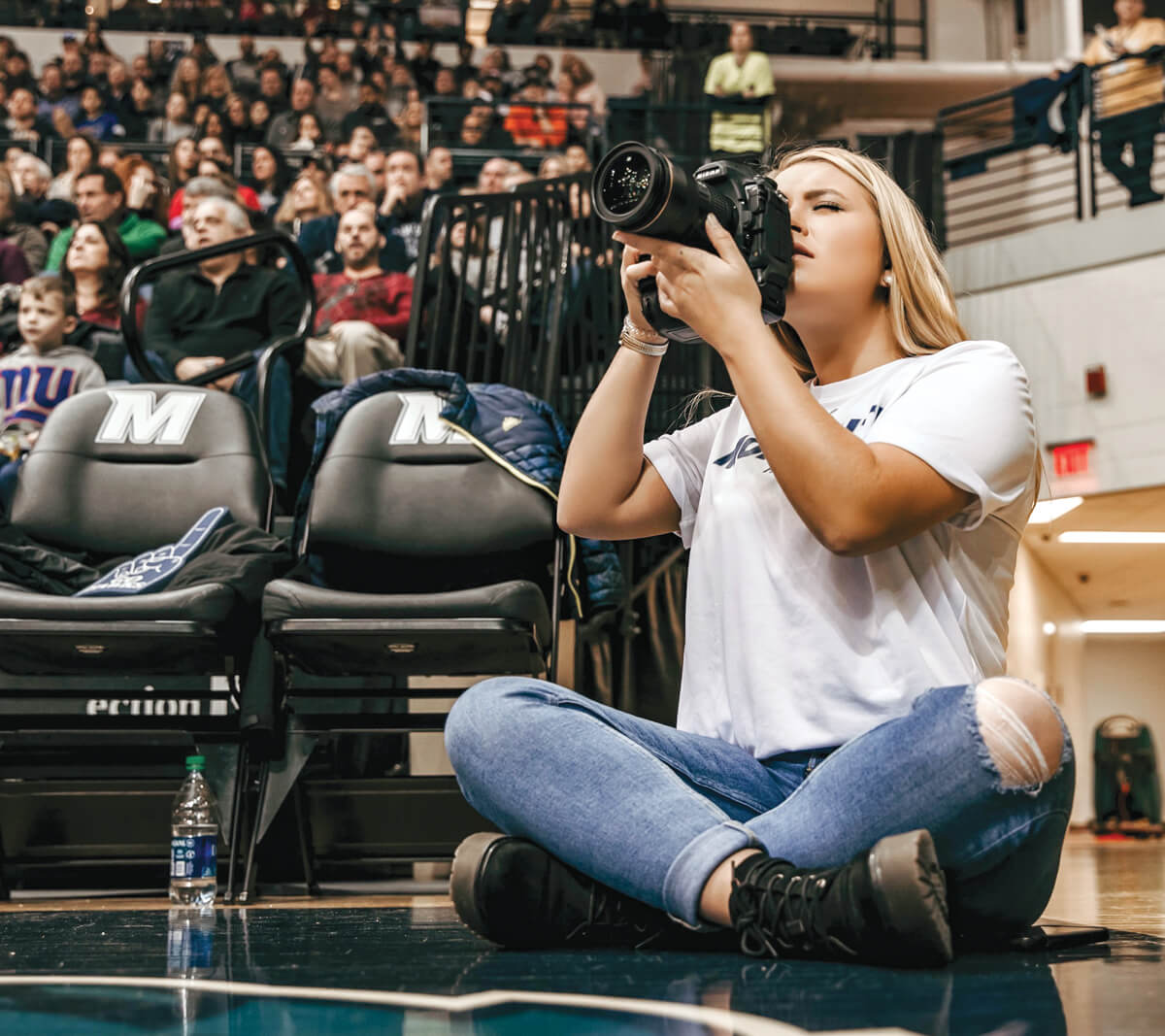
Good Sport
Hawks photographer Karlee Sell shares her secrets.
Anyone who follows Monmouth sports online has likely seen the work of Karlee Sell, athletics’ uber-talented student photographer. (If not, check it out at here.) Sell, who has photographed all 23 sports during her four years at Monmouth, is set to graduate in December. Before that happens, we picked her brain for some tips on shooting sporting events.
1. Get into position
The best place to be is on the sidelines, not the stands, but be aware of your surroundings so you don’t interfere with the action. And make in-game adjustments: Switch sides at halftime for different perspective on the action.
2. Light it up
Keep the light at your back to illuminate the action, but skip the flash. “It’s the quickest way to get kicked out,” says Sell. For outdoor sports, overcast and cloudy days are best. “There are no harsh shadows, and you can see the players’ faces clearly.”
3. Shoot away
To capture the action, keep your ISO setting low, your shutter speed at or above 1/1000th of a second, and your lens set to autofocus. But remember there’s more to sports photography than what’s on the field. “That awesome touchdown shot is great to have, but the blood, sweat, and tears that go into every game are just as interesting,” says Sell.
4. Take your game to the next level
Cellphones are for selfies: To take great sports photos, you need an SLR or mirrorless camera. A 200- to 500-millimeter zoom lens gets you close to the action; a monopod helps stabilize your shots. As for editing, Sell suggests Adobe Lightroom. “It’s easy to use and can make an average photo great.”